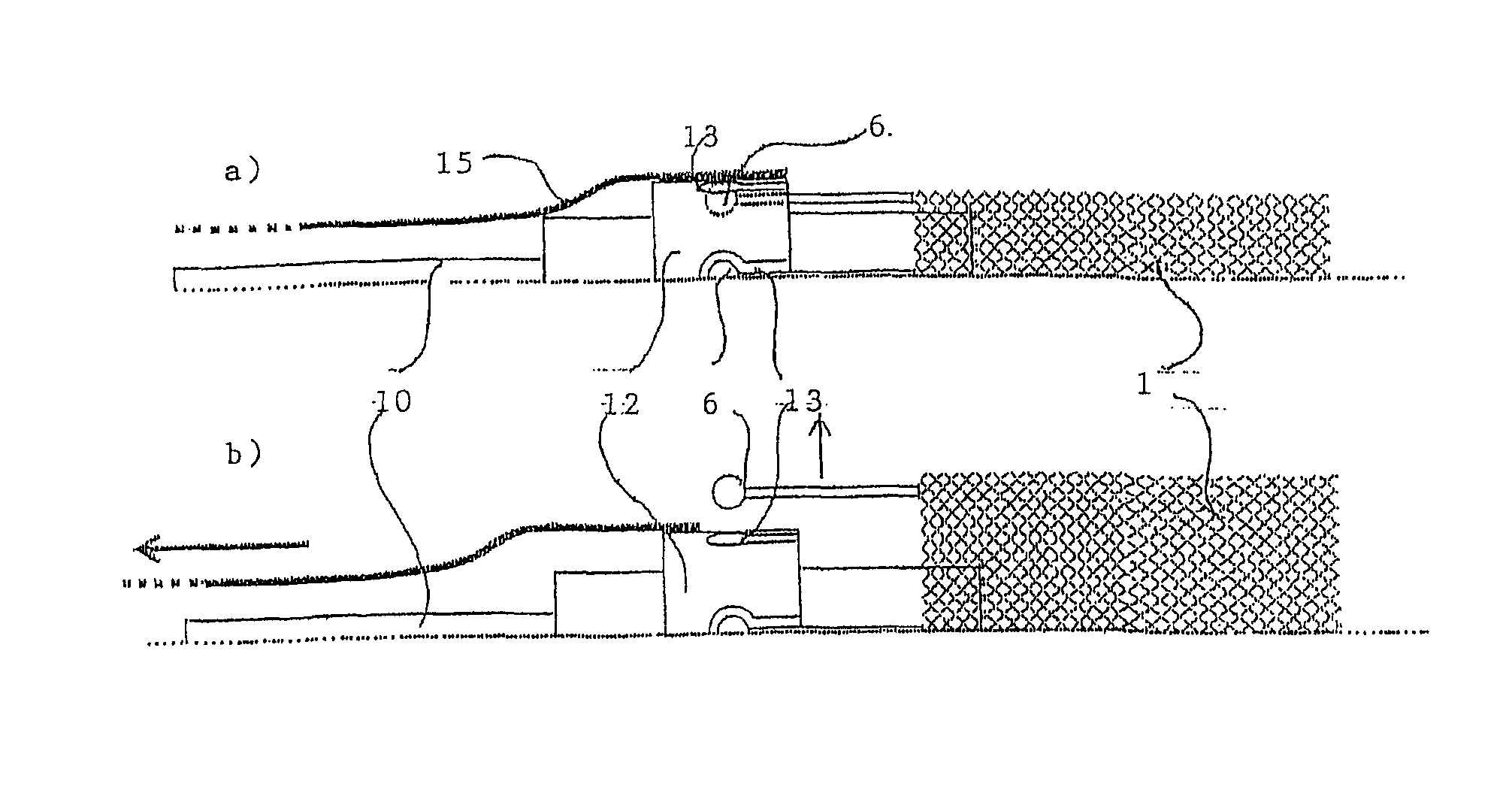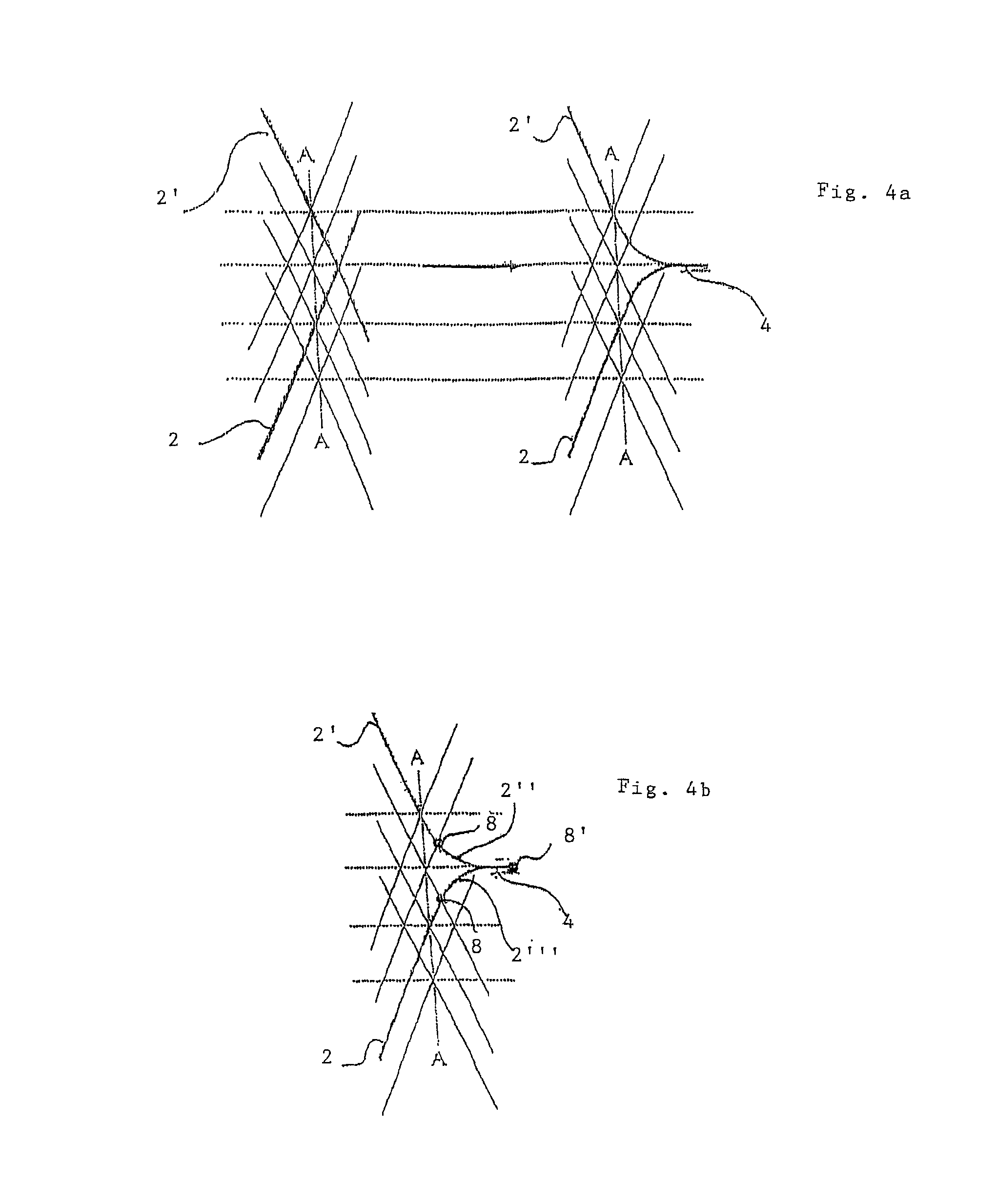Implant for influencing blood flow
a technology of blood flow and implants, applied in blood vessels, medical science, textiles and papermaking, etc., can solve problems such as fatal risks, spirals may be flushed out, and patients may be affected
- Summary
- Abstract
- Description
- Claims
- Application Information
AI Technical Summary
Benefits of technology
Problems solved by technology
Method used
Image
Examples
Embodiment Construction
[0060]FIG. 1 shows the braid structure of an inventive implant 1 consisting of individual filaments 2 intertwined with each other. In the example shown the individual filaments intersect at an angle of approx. 120° with the open side of the angle pointing to the open ends of the circular braiding. The illustration shows the braid in a slightly stretched / elongated state, i.e. the diameter is reduced.
[0061]The angle Theta denotes the braid angle in relation to the longitudinal axis, said angle may amount up to 80° in unstretched condition and when nominal diameter has been reached. When the braiding is in elongated position inside the catheter angle Theta may reduce to approx. 7°.
[0062]It is to be understood that the nominal diameter of the circular braiding will match the lumen of the target vessel at the location where treatment takes place.
[0063]The braid is manufactured on a conventional braiding machine in the form of an endless braid structure. Braiding is performed on a mandrel...
PUM
 Login to View More
Login to View More Abstract
Description
Claims
Application Information
 Login to View More
Login to View More - R&D
- Intellectual Property
- Life Sciences
- Materials
- Tech Scout
- Unparalleled Data Quality
- Higher Quality Content
- 60% Fewer Hallucinations
Browse by: Latest US Patents, China's latest patents, Technical Efficacy Thesaurus, Application Domain, Technology Topic, Popular Technical Reports.
© 2025 PatSnap. All rights reserved.Legal|Privacy policy|Modern Slavery Act Transparency Statement|Sitemap|About US| Contact US: help@patsnap.com



